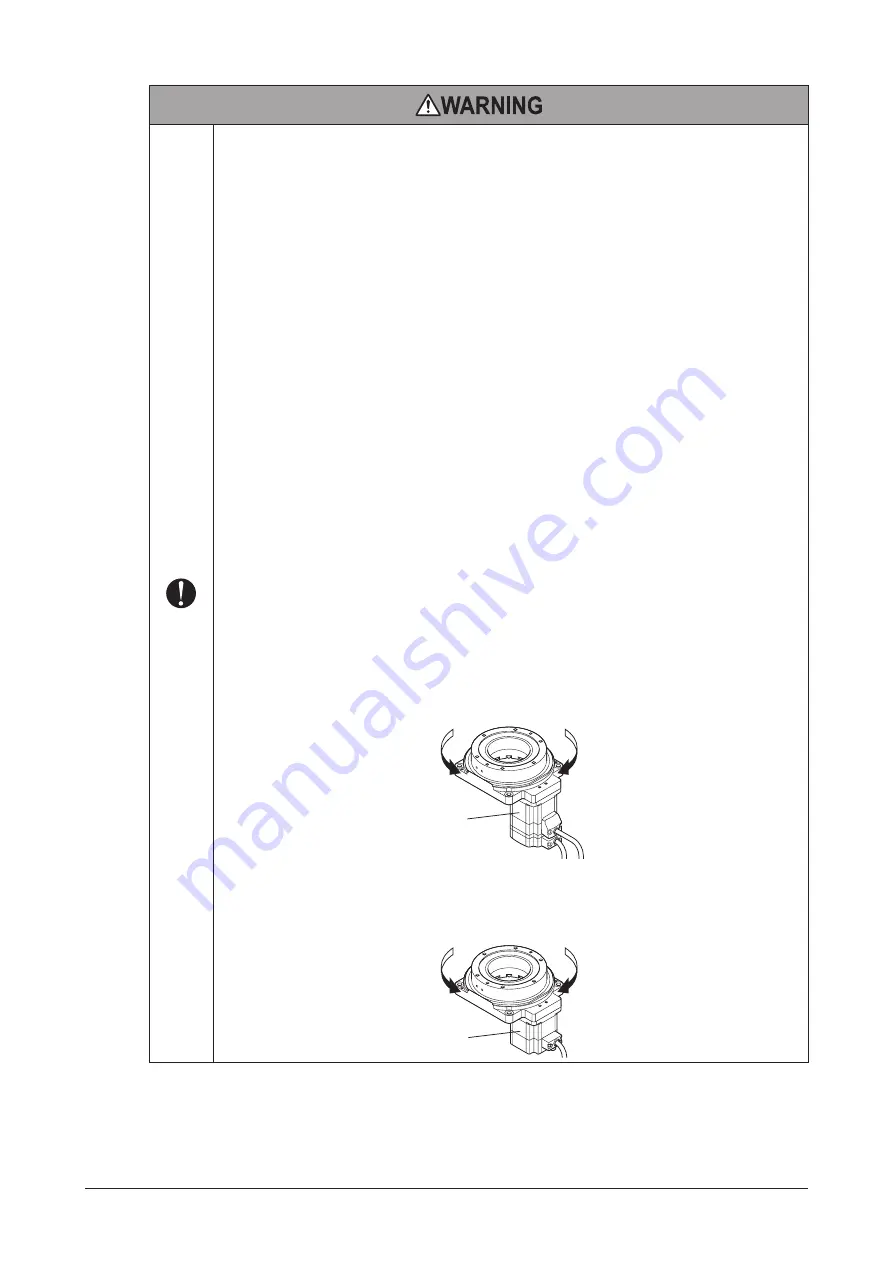
Safety precautions
9
▐
•
Assign qualified personnel the task of installing, wiring, operating/controlling, inspecting and
troubleshooting the product.
Failure to do so may result in fire, electric shock, injury or damage to equipment.
•
If this product is used in a vertical application, be sure to provide a measure for the position retention
of moving parts.
Failure to do so may result in injury or damage to equipment.
•
Operate the data setter outside the safety fence.
Failure to do so may result in injury.
•
When the driver generates an alarm (any of the driver's protective functions is triggered), take
measures to hold the moving part in place since the motor stops and loses its holding torque.
Failure to do so may result in injury or damage to equipment.
•
Install the products in the enclosure in order to prevent electric shock or injury.
•
The products are designed with Class I equipment basic insulation. When installing the motor, do not
touch the product or be sure to ground them.
Failure to do so may result in electric shock.
•
Provide an emergency-stop device or emergency-stop circuit external to the equipment so that the
entire equipment will operate safely in the event of a system failure or malfunction.
Failure to do so may result in injury.
•
Perform the return-to-home operation after the power is restored. When an actuator equipped with
the
AZ
Series is used, or when the absolute-position backup system is used in the built-in controller
type driver with an actuator equipped with the
AR
Series, execute positioning operation of the
absolute mode.
Failure to do so may result in injury or equipment damage.
•
Operate the actuator after setting the resolution, moving direction and other parameters.
If the actuator is operated without setting parameters, the output table may move to unexpected
directions or run at unexpected speeds, causing injury or damage to equipment. (A variety of
parameters have been set to the actuator equipped with the
AZ
Series at the time of shipment.)
•
After replacing the driver, set the resolution, moving (rotating) direction or other parameters before
operating the actuator.
If the actuator is operated without setting parameters, the output table may move to unexpected
directions or run at unexpected speeds, causing injury or damage to equipment.
•
For the actuators equipped with the
AZ
Series, the output table rotates in the same direction to the
CW input (or CCW input) of the driver input signal.
Rotation direction
when inputting
the CW signal
Rotation direction
when inputting
the CCW signal
AZ
Series
•
For the actuators equipped with the
AR
Series or
RKII
Series, the output table rotates in the opposite
direction to the CW input (or CCW input) of the driver input signal. When the CW signal is input, the
output table rotates in the counterclockwise direction. When the CCW signal is input, the output table
rotates in the clockwise direction.
AR
Series
RKII
Series
Rotation direction
when inputting
the CW signal
Rotation direction
when inputting
the CCW signal
























